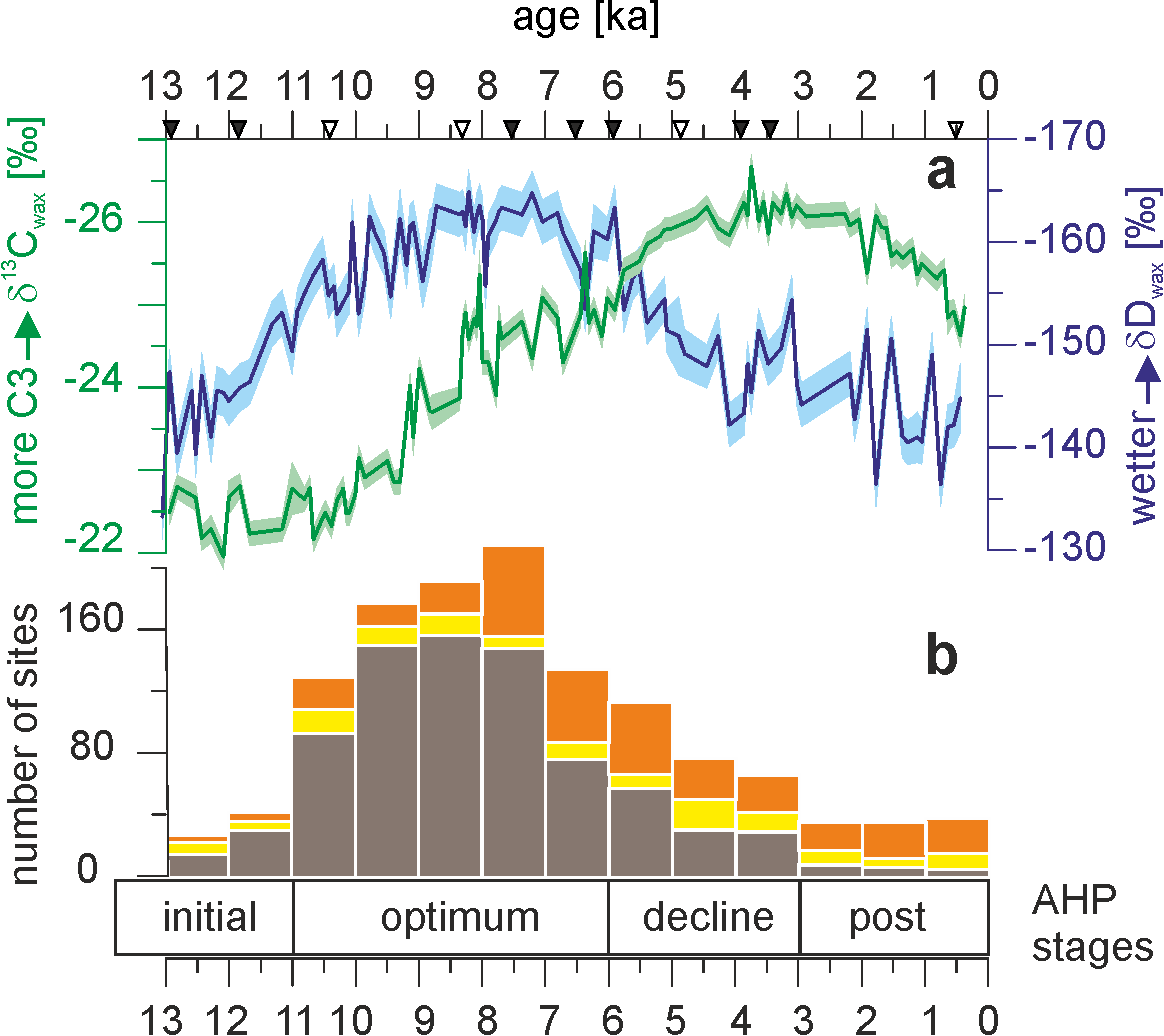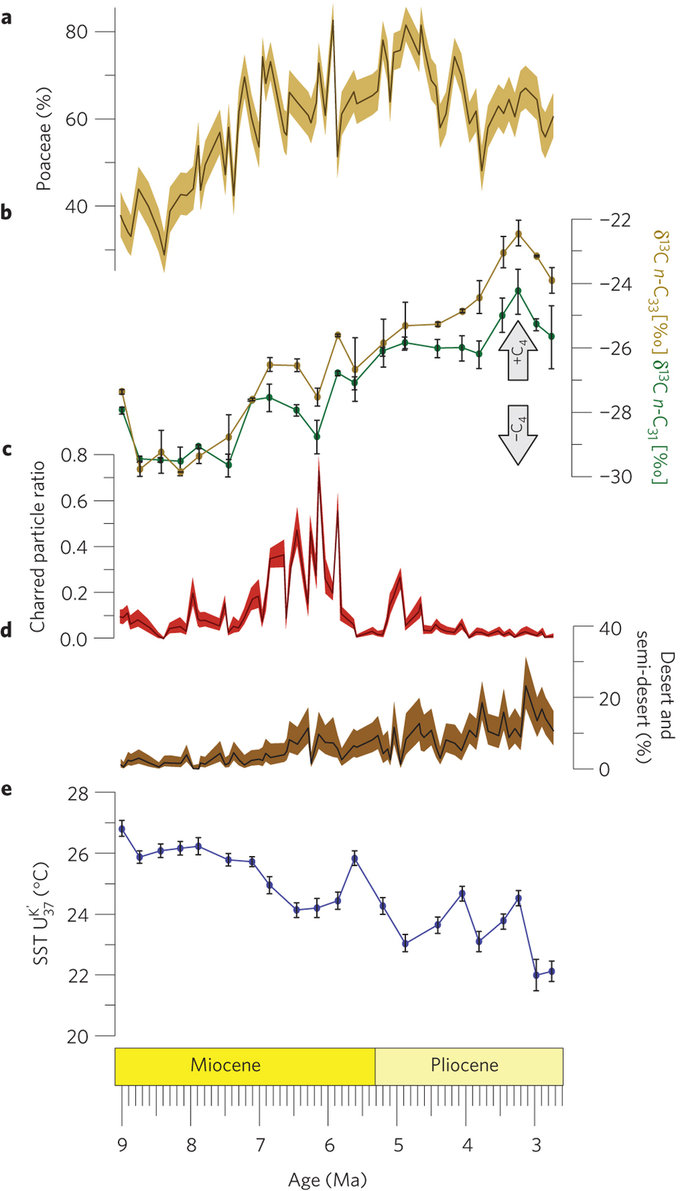- Home
- Fire palaeoecology
Fire palaeoecology
The importance of fire in the establishment and consolidation of African savannahs is more and more recognized. The combination of pollen counting, microcharcoal analysis, and stable carbon measurements is a powerful tool in the palaeoecology of C4 savannahs. We published papers about the role of fires in Africa and Indonesia. The African papers concern the early expansion of C4 savannah in southern Africa and the differential effects of fire on the vegetation of the Sahara since the early Holocene. I also contributed to the global fire database. Yanming Ruan worked on the deglacial and Holocene fire record of East Java.
Holocene
The roles of fire in Holocene ecosystem changes of West Africa
Dupont LM, Schefuß E
Earth and Planetary Science Letters 481 (2018) 255-263
doi:10.1016/j.epsl.2017.10.049

Stable isotope compositions of plant wax in GeoB7920-2 compared to paleo-hydrology after Lézine et al. (2011).
a. δDwax is expressed in per mil VSMOW in blue (right axis) indicating changes in rainfall amount. δ13Cwax is expressed in per mil VPDB in green (left axis) and indicates the C3/C4-plant ratio in the vegetation. Stable isotope values are expressed as the weighted mean of C29 and C31 n-alkanes (the two most common higher plant wax compounds).
b. Distribution of paleo-hydrological records (palustrine in orange, fluviatile in yellow, lacustrine and playas in brown) as function of time (in bins of 1000 years) altered after Lézine et al. (2011). Timing of stages of the African Humid Period (AHP) is indicated.
Note that the minimum in the relative amount of C3 vegetation is recorded during the dry initial stage of the AHP but its maximum after the AHP, when humidity had already declined. The delayed response of the stable carbon isotopes can only be explained considering vegetation cover in relation to vegetation composition and fire regime. For details I refer to the mentioned paper.
NB: time scale runs from left (old) to right (young)
Interaction of fire, vegetation, and climate in tropical ecosystems: A multiproxy study over the past 22,000 years
Ruan Y, Mohtadi M, Dupont LM, Hebbeln D, Van der Kaars S, Hopmans EC, Schouten S, Hyer EJ, Schefuß E
Global Biogeochemical Cycles 34 (2020) e2020GB006677
doi:10.1029/2020GB0066776
Miocene
The role of fire in Miocene to Pliocene C4 grassland and ecosystem evolution
Hoetzel S, Dupont L, Schefuß E, Rommerskirchen F, Wefer G
Nature Geoscience 6 (2013) 1027-1030
doi:10.1038/NGEO1984

Figure 2 from Hoetzel et al. (2013). Pollen of Poaceae, δ13C of plant wax, microcharcoal, pollen of desert and semi-desert plants and alkenone derived sea surface temperatures from ODP1081 offshore North Namibia. We find that in southwestern Africa, the expansion of C4 grasses occurred alongside increasing aridity and enhanced fire activity. During further aridification in the Pliocene, the proportion of C4 grasses in the grasslands increased, while the grassland contracted and deserts and semi-deserts expanded.
NB: time scale runs from left (old) to right (young)
Global charcoal database
Predictability of biomass burning in response to climate changes.
Daniau, A.-L. et al.
Global Biogeochemical Cycles 26 (2012) GB4007: 1-12. doi:10.1029/2011GB004249


